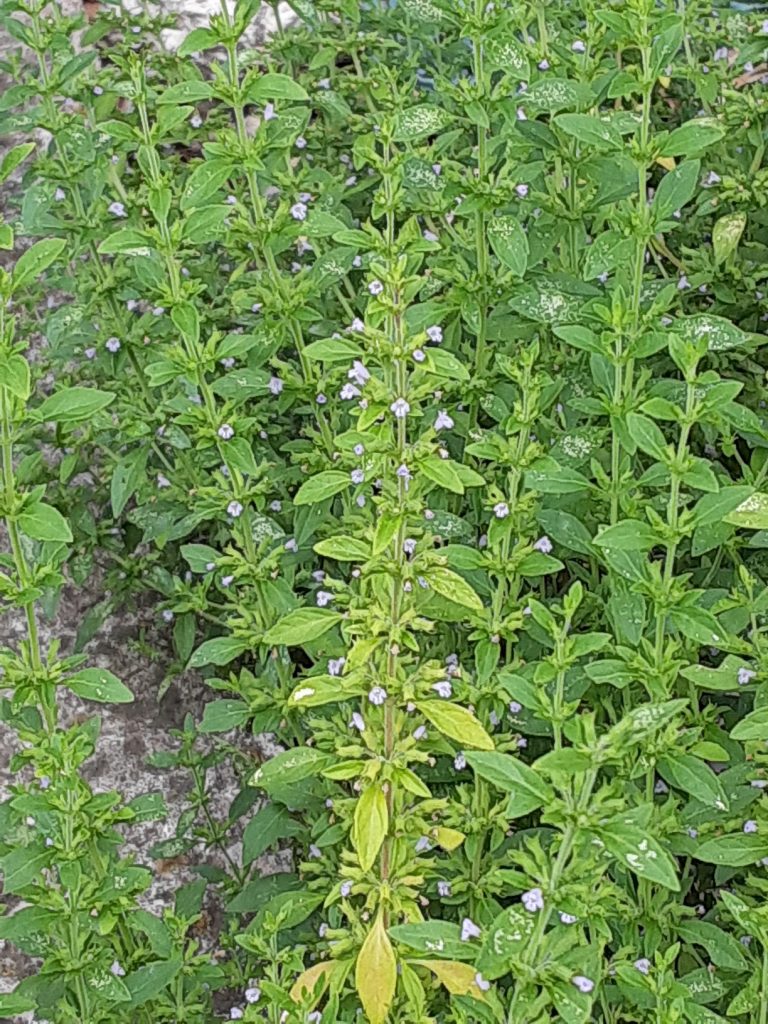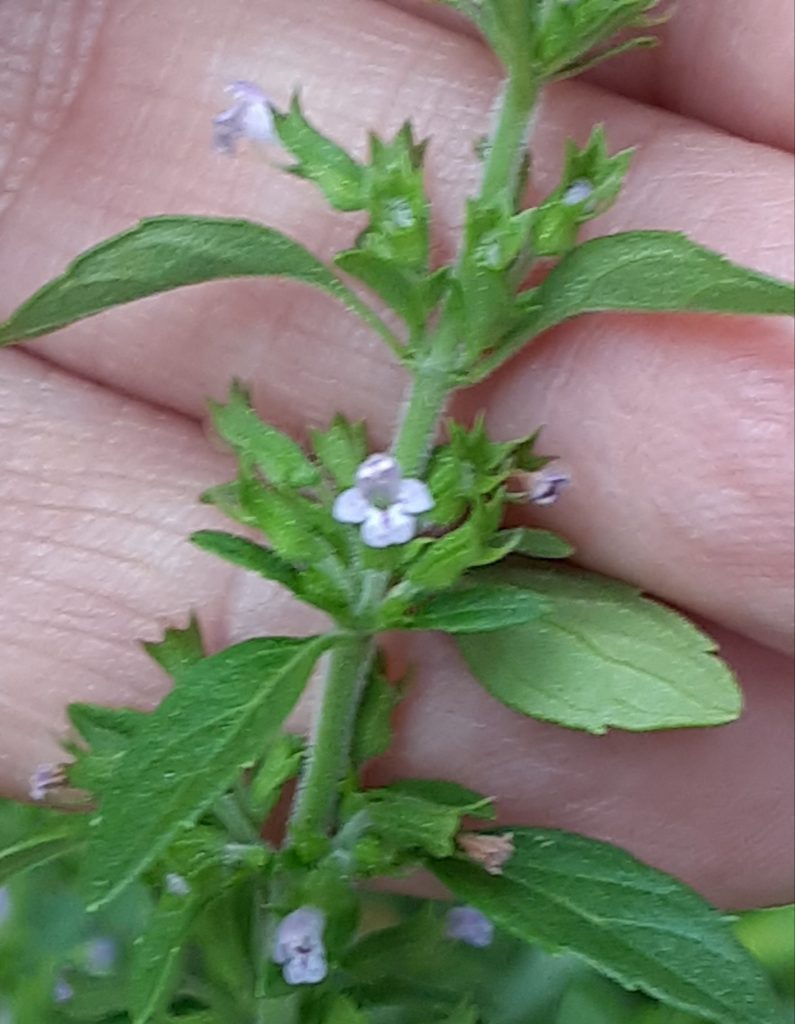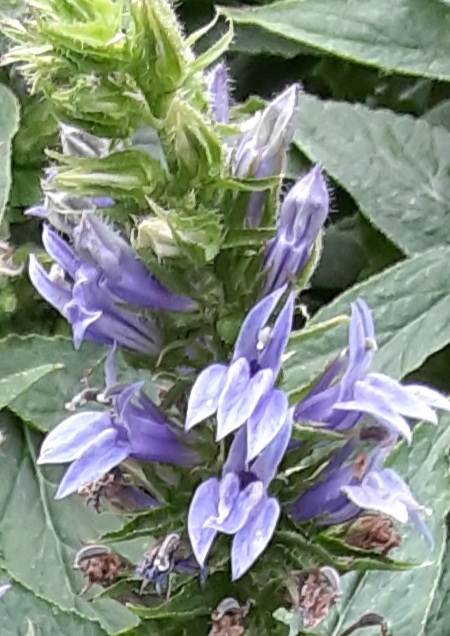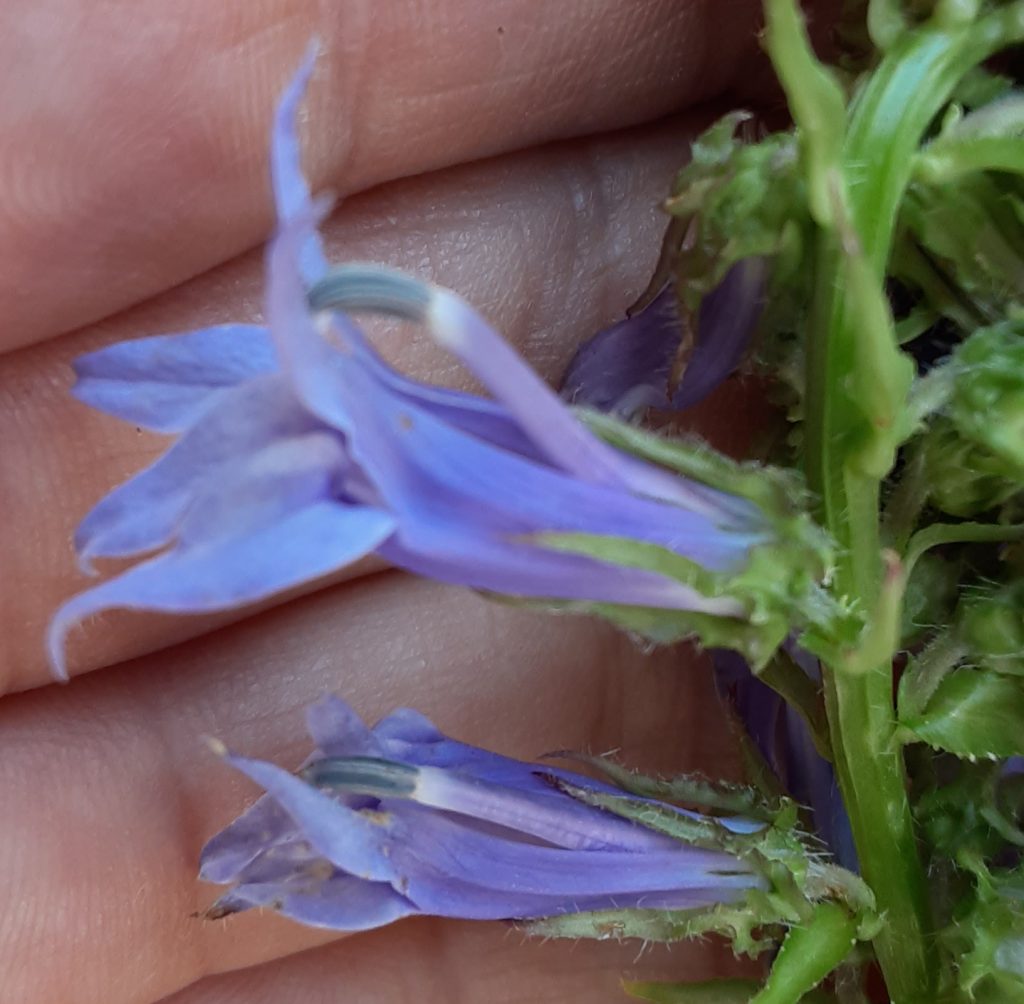By: Susan Sprout
Find out what’s underfoot with NPC member and environmental educator, Susan Sprout! Catch up on past issues of Underfoot: Introduction & Bloodroot, Trout Lily & Coltsfoot, Blue Cohosh & Dutchman’s Breeches, Ground Ivy & Forget-Me-Nots, Goldthread & Wild Ginger, Common Mullein & Sweet Woodruff, Aniseroot & Butterfly Weed, Myself , Jewelweed & Soapwort.
American Pennyroyal
American Pennyroyal is a native plant that is a member of the mint family. European Pennyroyal, an offering of local garden centers and occasional escapee from flower beds, is a low-growing perennial that likes a more moist environment than its taller American cousin.
Although different species from different continents, these two mints share many common characteristics like square stems and opposite leaves, chemical properties, and similar uses.
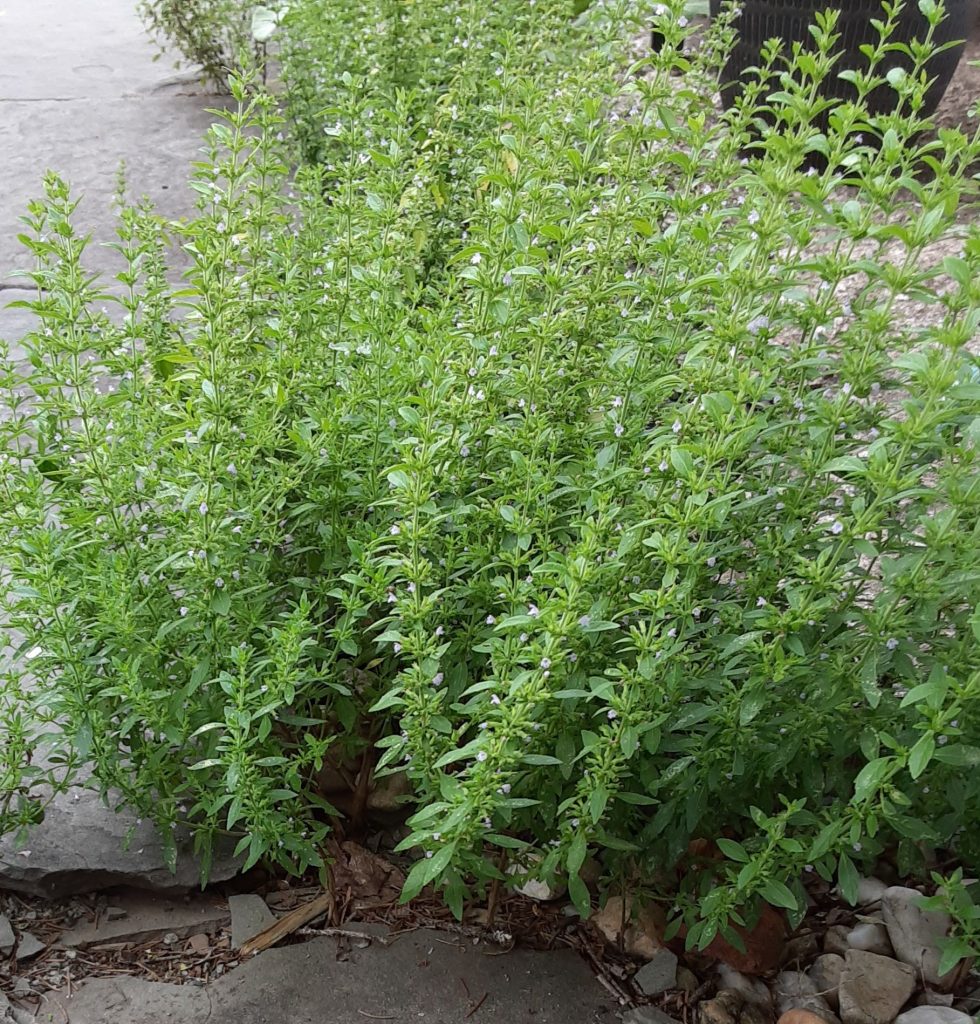
Our Pennyroyal stands about a foot tall and has small lance-shaped leaves with tiny bluish, two-lipped flowers each having three teeth above and two below. The blooms appear randomly from July to September in the axils of the leaves where they attach to the stems.
Once identified, this plant is a nasal treat… if you like pungent, minty aromas. I love to find this plant growing in dry fields and woods so I can run my hand up over its leaves and inhale! Mmm. And so much better, if you happen to be attacked by gnats and their ilk, just rub a hand over your exposed skin to transfer the essential oils to keep them at bay. This super insect repellent works on fleas, too. Grab a handful and rub down your cat or dog!
Great Lobelia
I look for the bright blue flowers of this stout native perennial in the mid to late summer like some folks search out bluebells in springtime! When looking at Great Lobelia’s individual flowers in their showy spikes, they appear to have two erect ears above and a triple-divided lower lip with a solid whitish landing strip for their chief pollinators, the bumblebees.
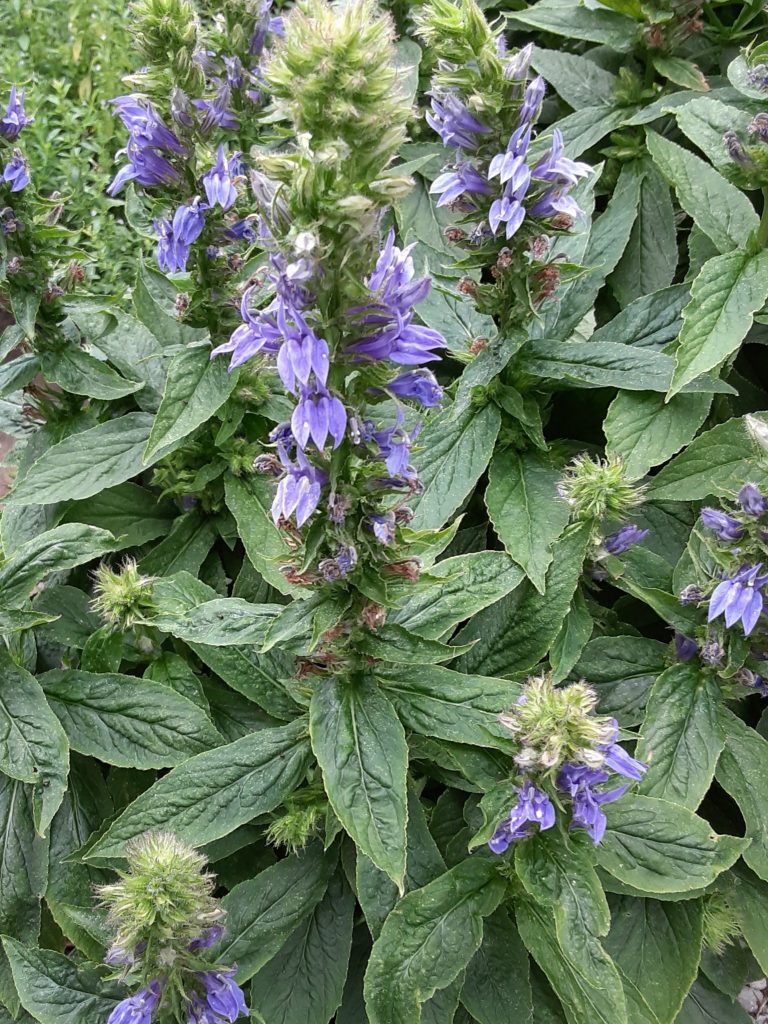
The two top and three bottom petals are actually lobes attached to the flower’s tube which is split on top so that a rod consisting of the stamens joined around the style can protrude downward to brush against the pollinators. This unique split of the flower tube, according to botanists, was the next step in plant evolution toward composite flowers with their disk and ray florets.
The scientific name of this plant, Lobelia siphilitica, hints at one of its former medicinal uses as treatment for syphilis. Many Native Americans used the ground-up root as a poultice for wounds and infections. Its sticky juice is considered toxic for internal use.


